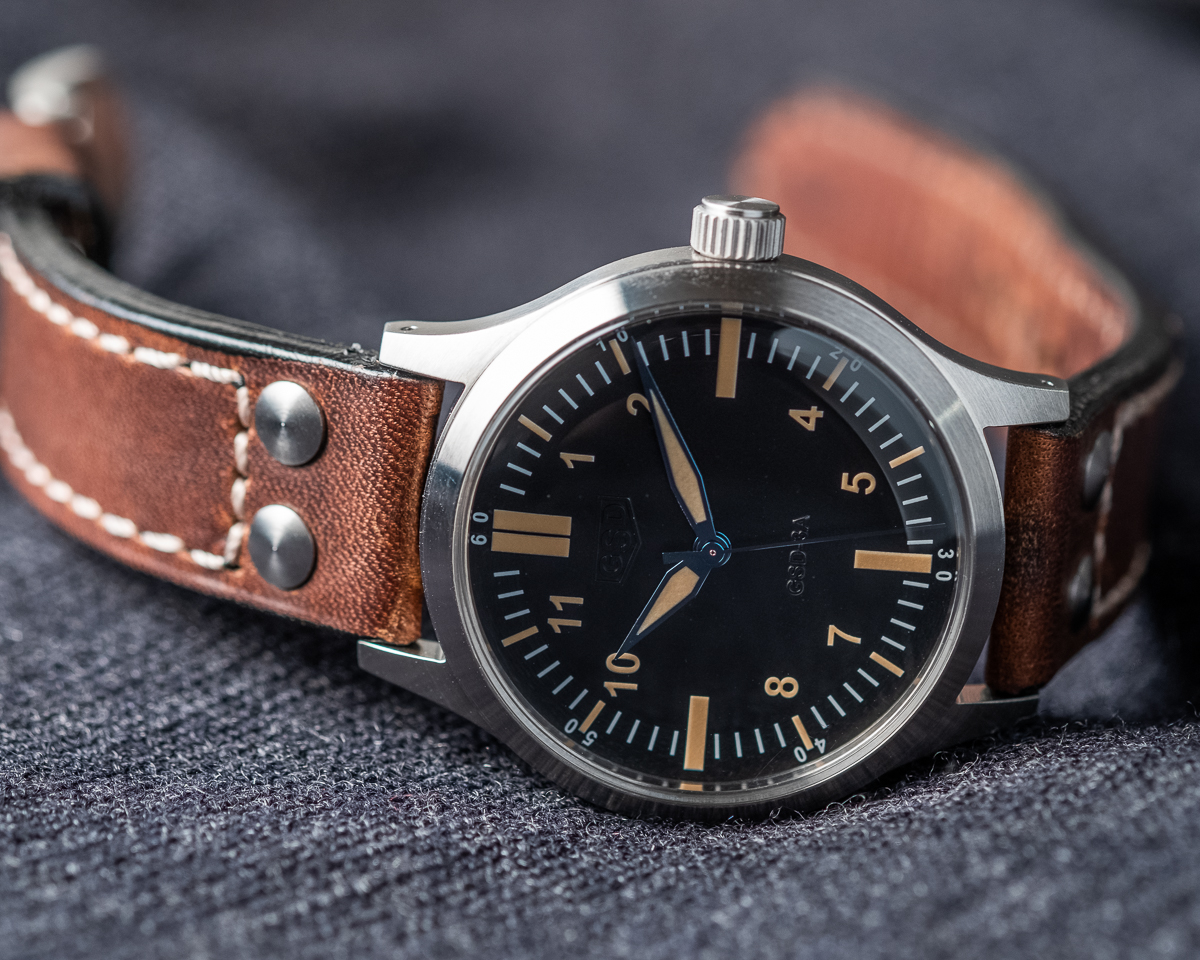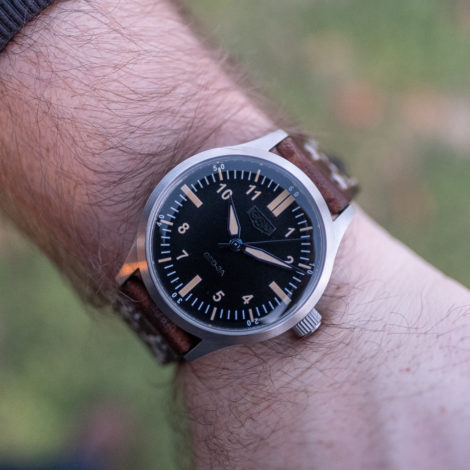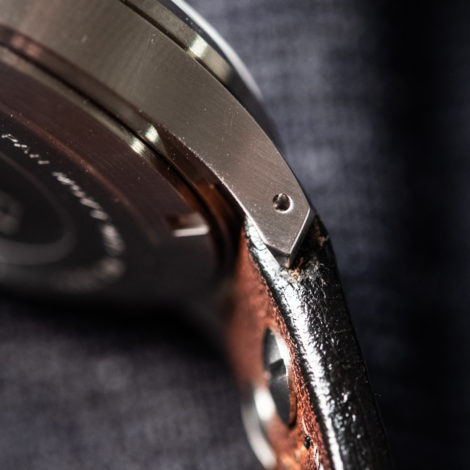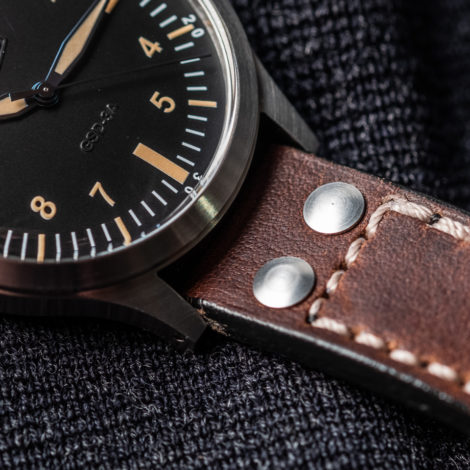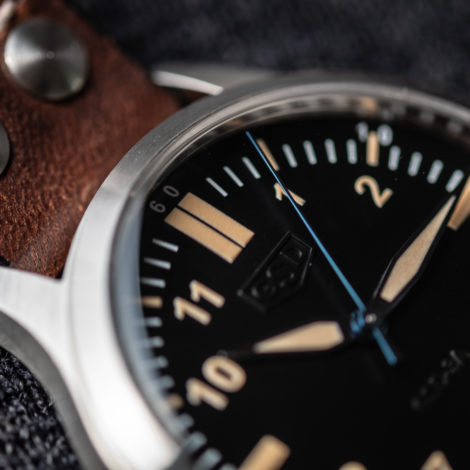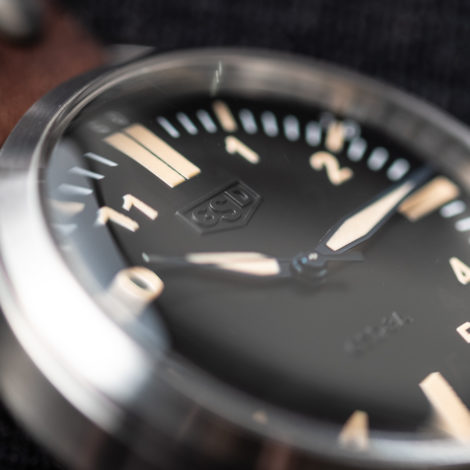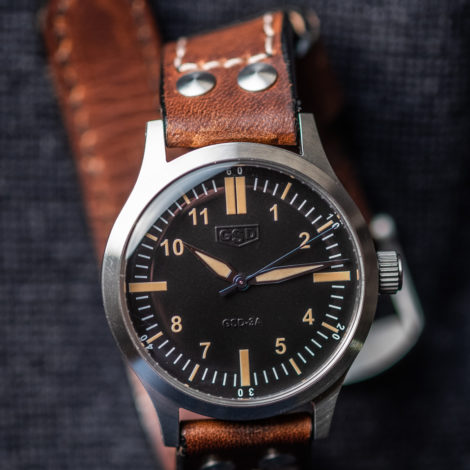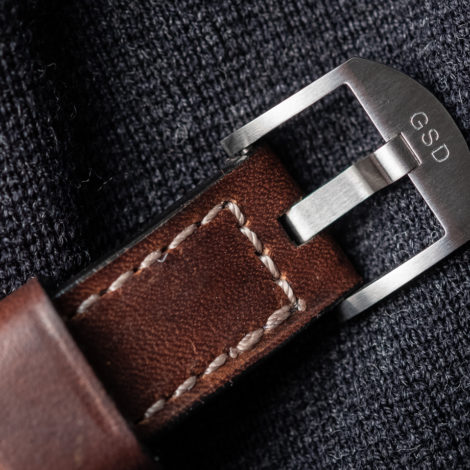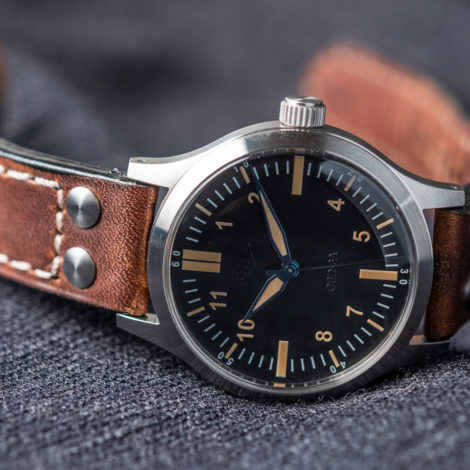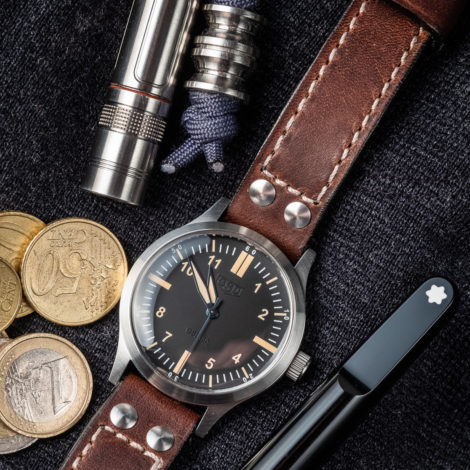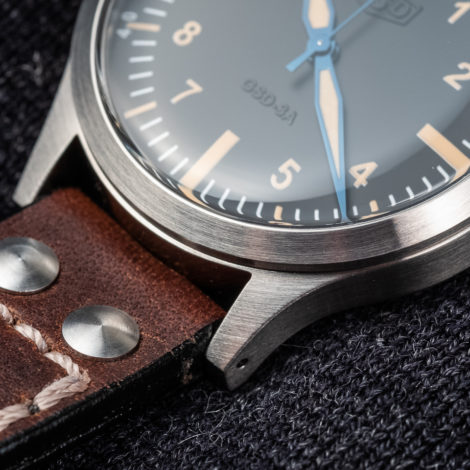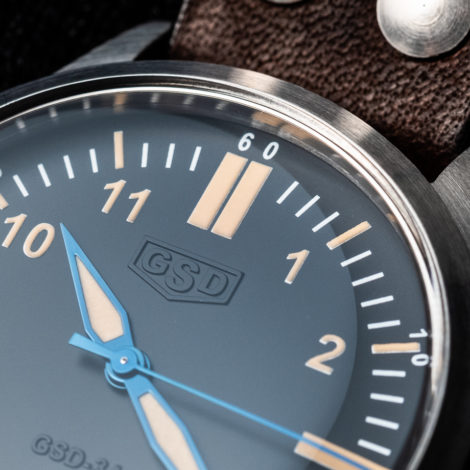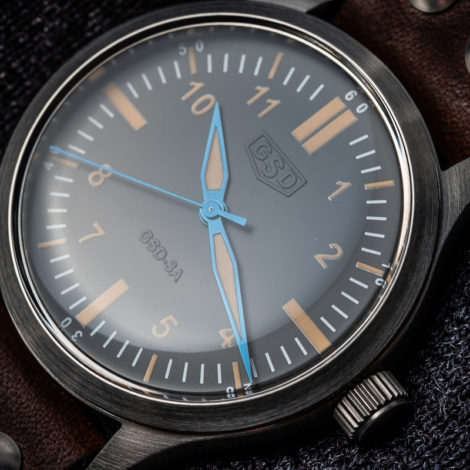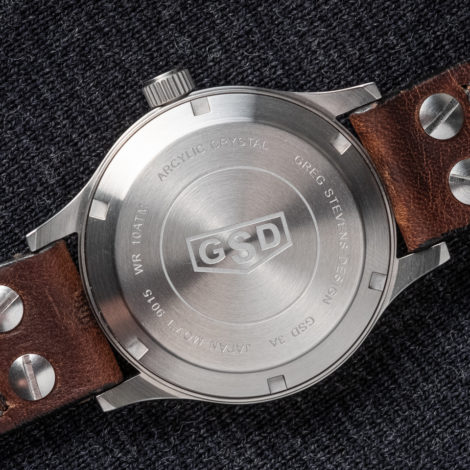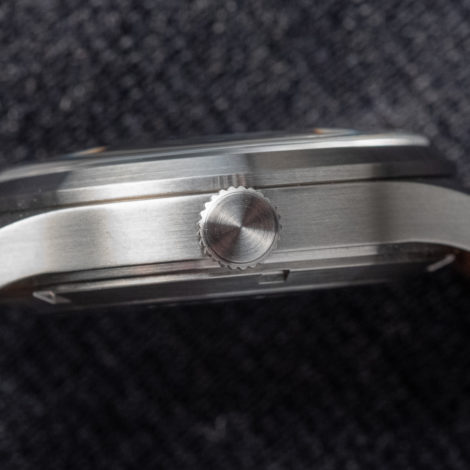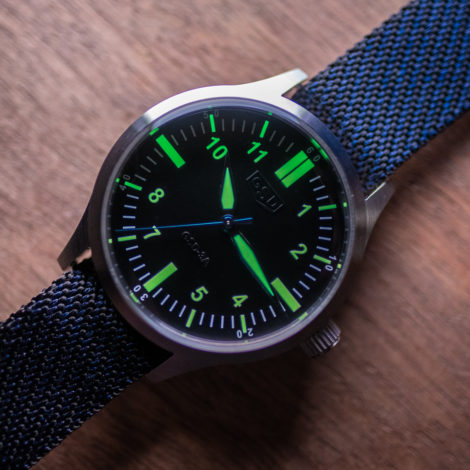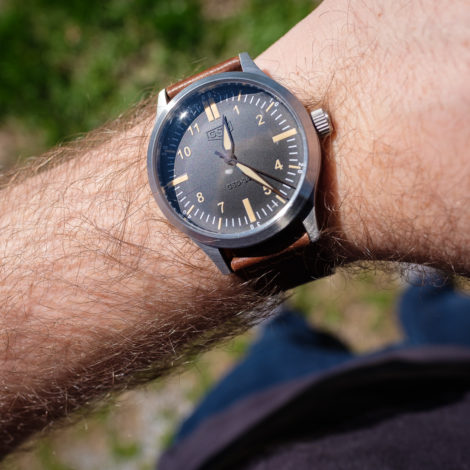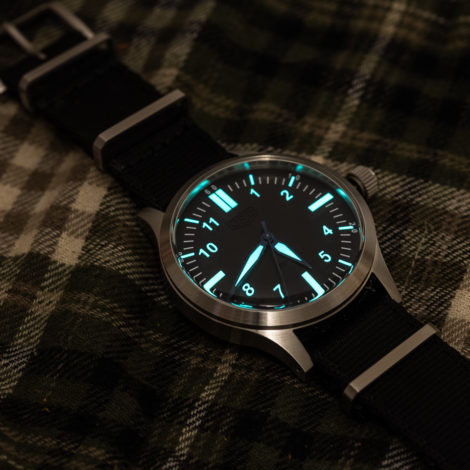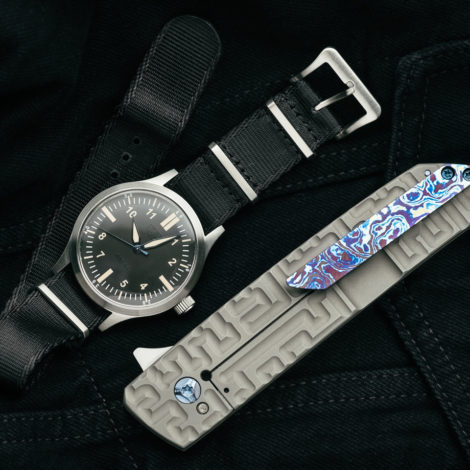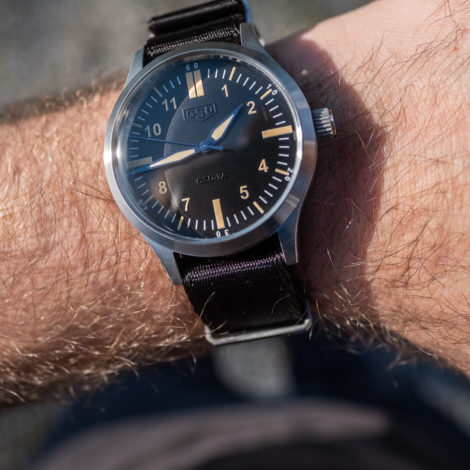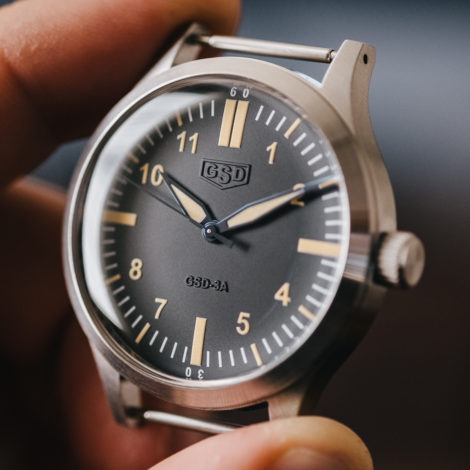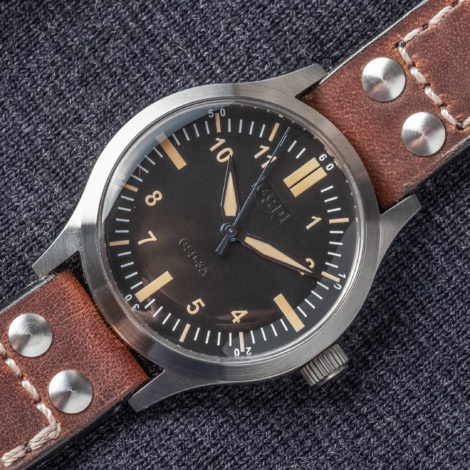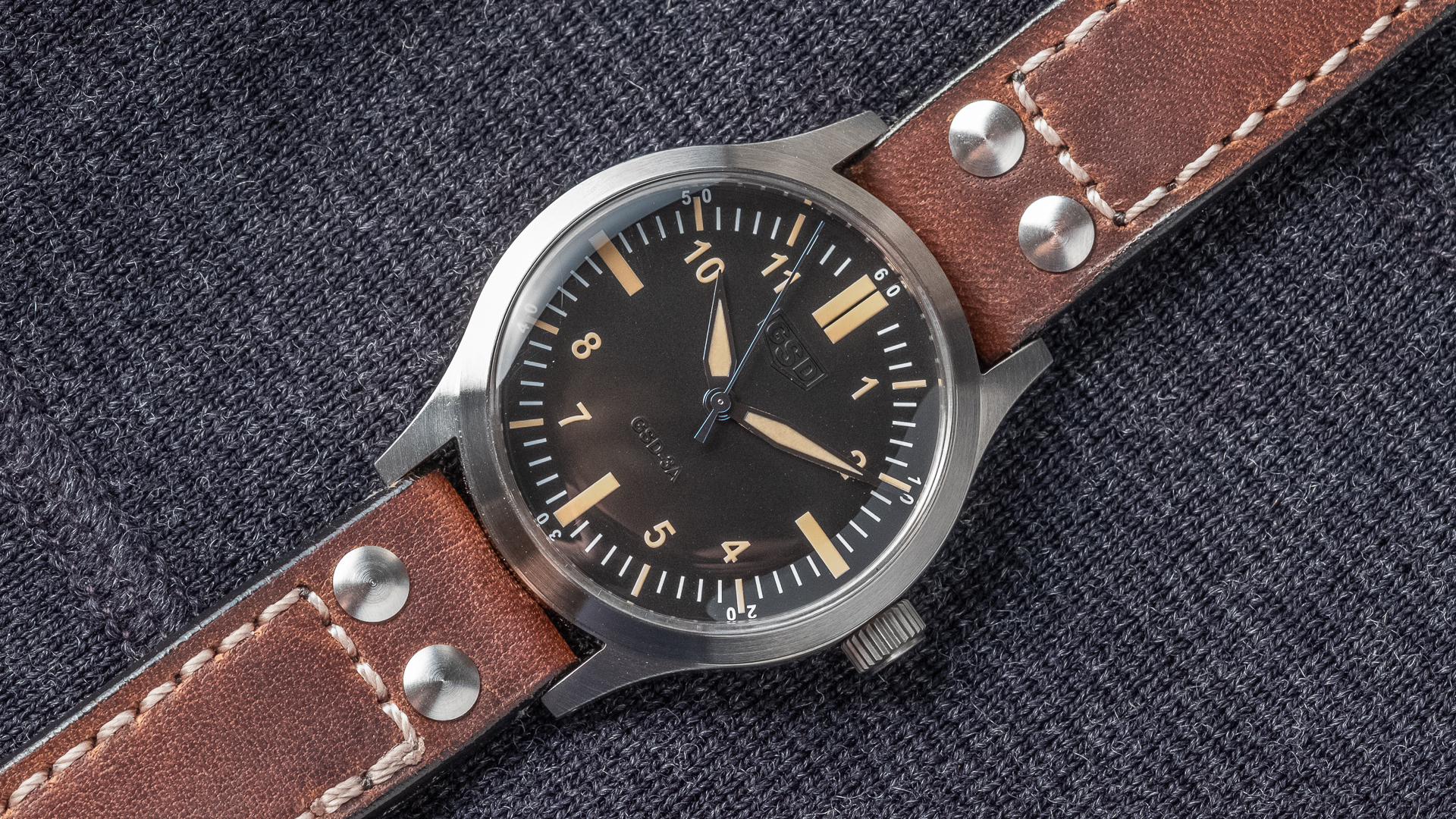
Greg Stevens Design watches are perfect examples of what’s available out there when you take the training wheels off and get into independent brands. Stevens first got his start as a custom strap maker; he discovered that it was difficult to find off-the-shelf watch straps that would accommodate his substantial wrists, so he began to make his own. This pursuit led to watch design and, ultimately, to the GSD-3A we have here. In the past, Stevens’ watches were, in my opinion, larger than I would like on my wrist, in spite of how I liked the design. This time around, he has paired the case down and packaged an excellent pilot watch inside. This is the watch I’ve wanted Stevens to build for a couple of years now.
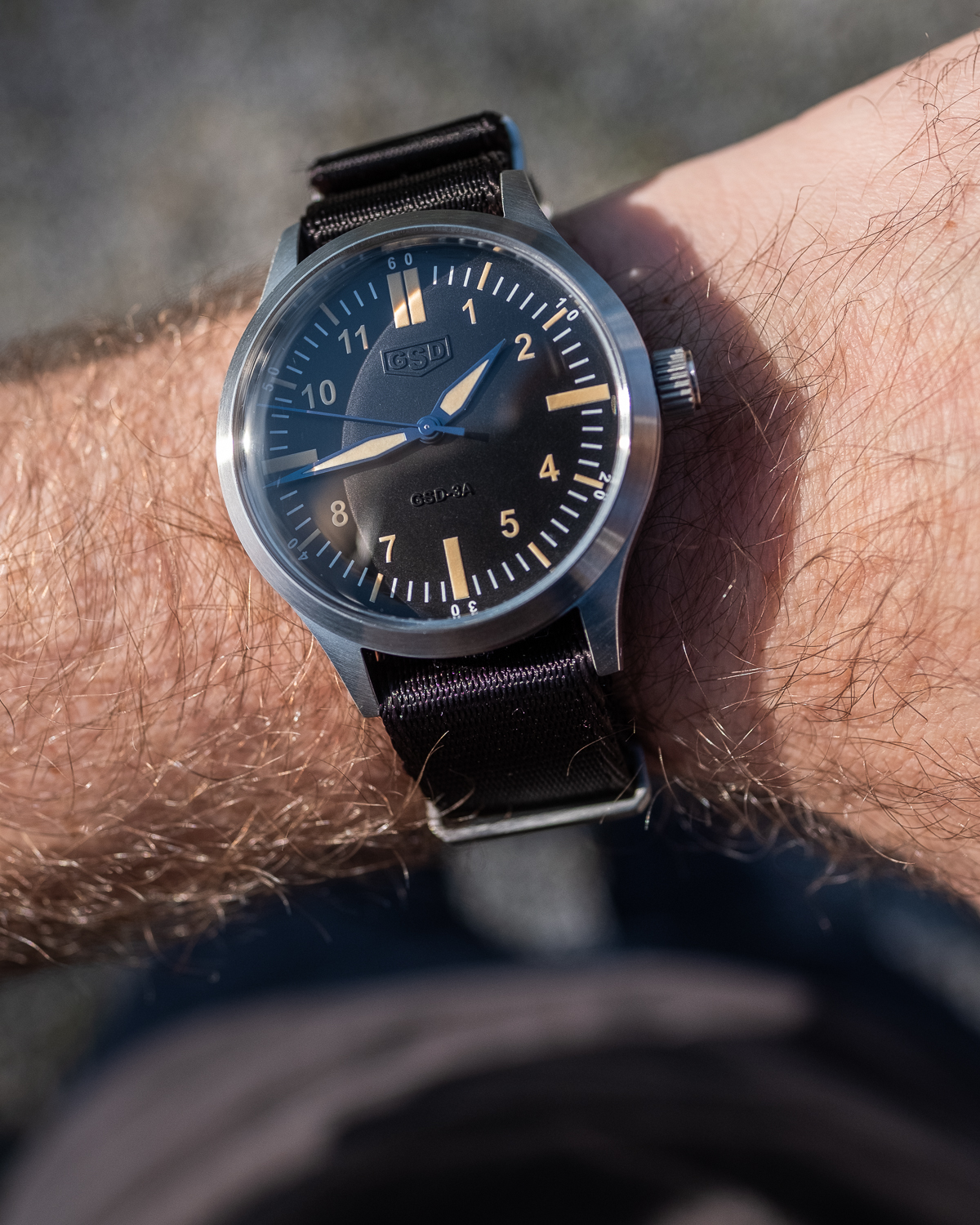
The Case
The GSD-3A Pilot watch comes in a 41mm steel case with a variety of finishes that Stevens applies by hand (with the obvious exception being any coated cases). This is my personal watch, so I opted for a simple brushed finish throughout — this gives it a simple aesthetic that will age gracefully with some honest wrist wear. Lug-to-lug on the GSD-3A is close to 49mm and the thickness is just over 13mm, making it pretty comfortable on my 7” wrist.
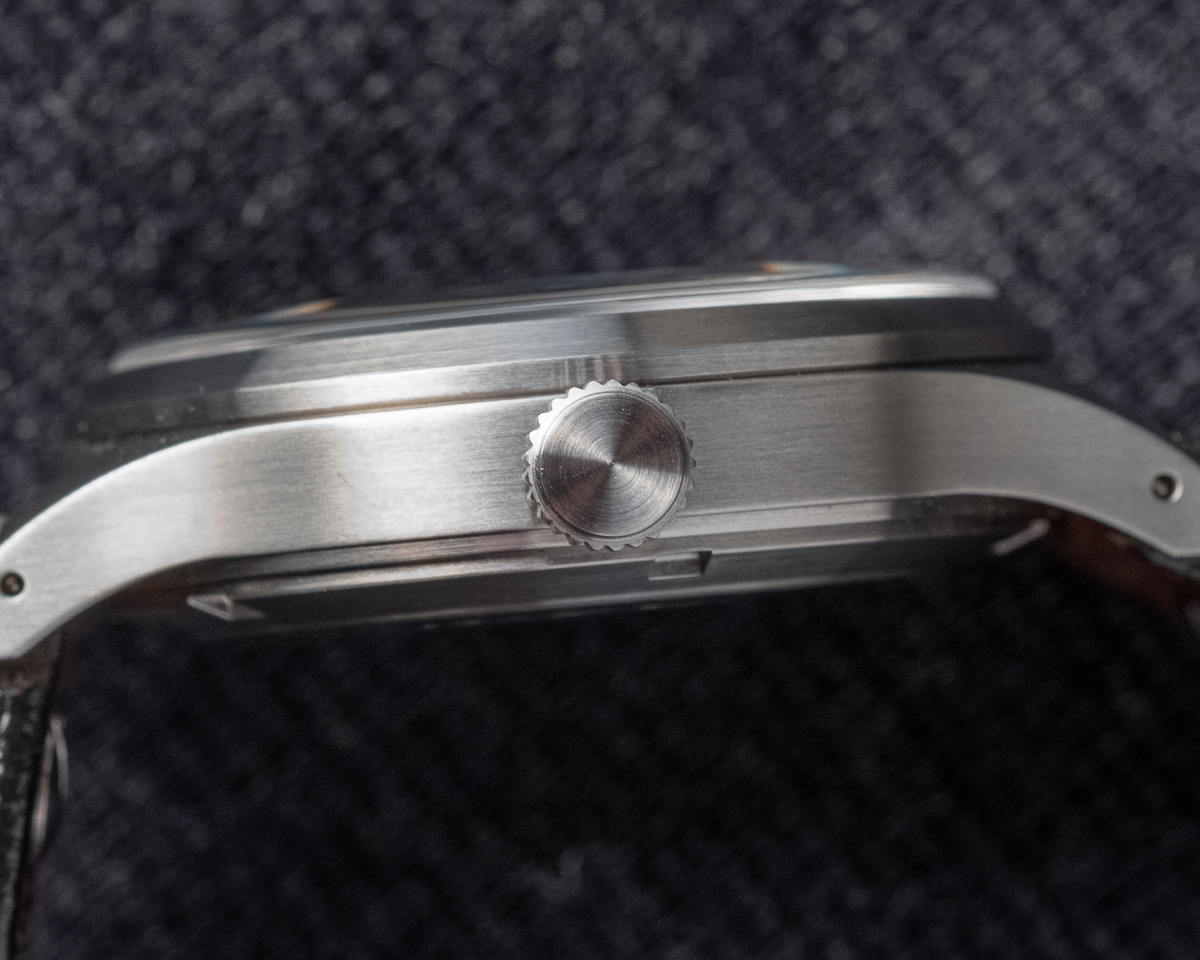
The crown on the GSD is an unguarded ~6.4mm piece of steel with some sharp and effective gimping. It’s also screw-down, which undoubtedly contributes to the GSD’s 10ATM depth rating. On that note, the depth rating on the GSD is ample for a watch of this caliber (reference some other pilots like the Longines Big Eye with its 5ATM, or the Stowa Flieger with 5ATM, as well).
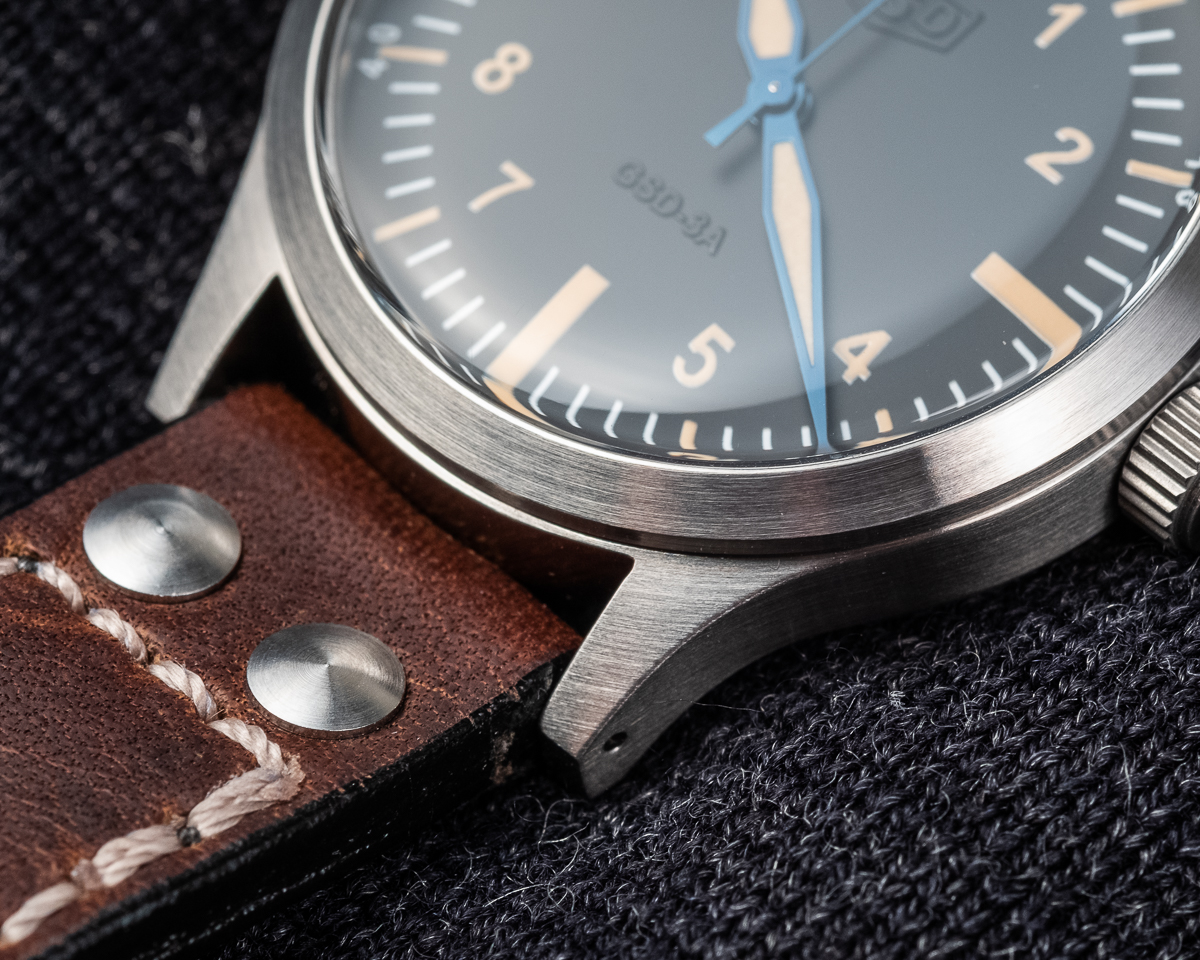
The lugs are simple 20mm drilled lugs, and the drilling here is very apt for a watch coming from a well-known strap maker. The GSD-3A is equally at home on a beefy aviator strap as it is on a NATO, and Stevens has made sure that you’ll have no problems swapping them out.

The crystal is acrylic, and I believe this was an aesthetic choice on the designer’s part to give the dial that degree of reflection desired by collectors of Heslite Speedmasters and other acrylic crystal(ed) watches. I’m certainly one who can appreciate this, and I have no issues with it — although I have a tube of Polywatch at the ready.
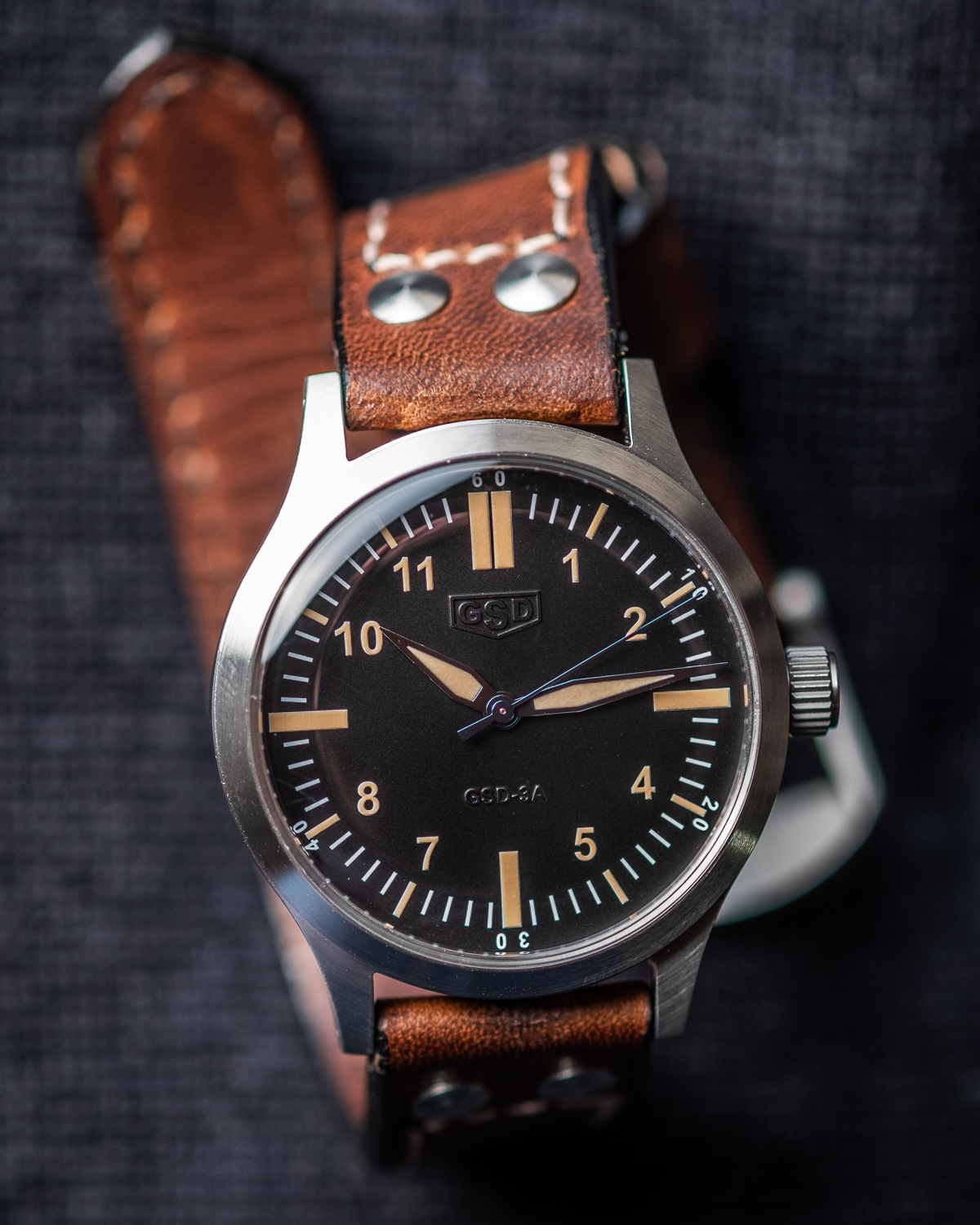
The Dial
One hurdle a lot of independent watchmakers run into is derivative dial designs. It can be tough to design something that’s fresh and new, and makers often fall into established tropes without even attempting to do something unique to their brand. This is one area in which I feel like Stevens’ watches excel for one reason primarily: the embossing on the dial. We’re all familiar with applied logos and indices, as we are with painted dials, but what the GSD-3A has is a raised/embossed logo and model name. I have always found this striking.
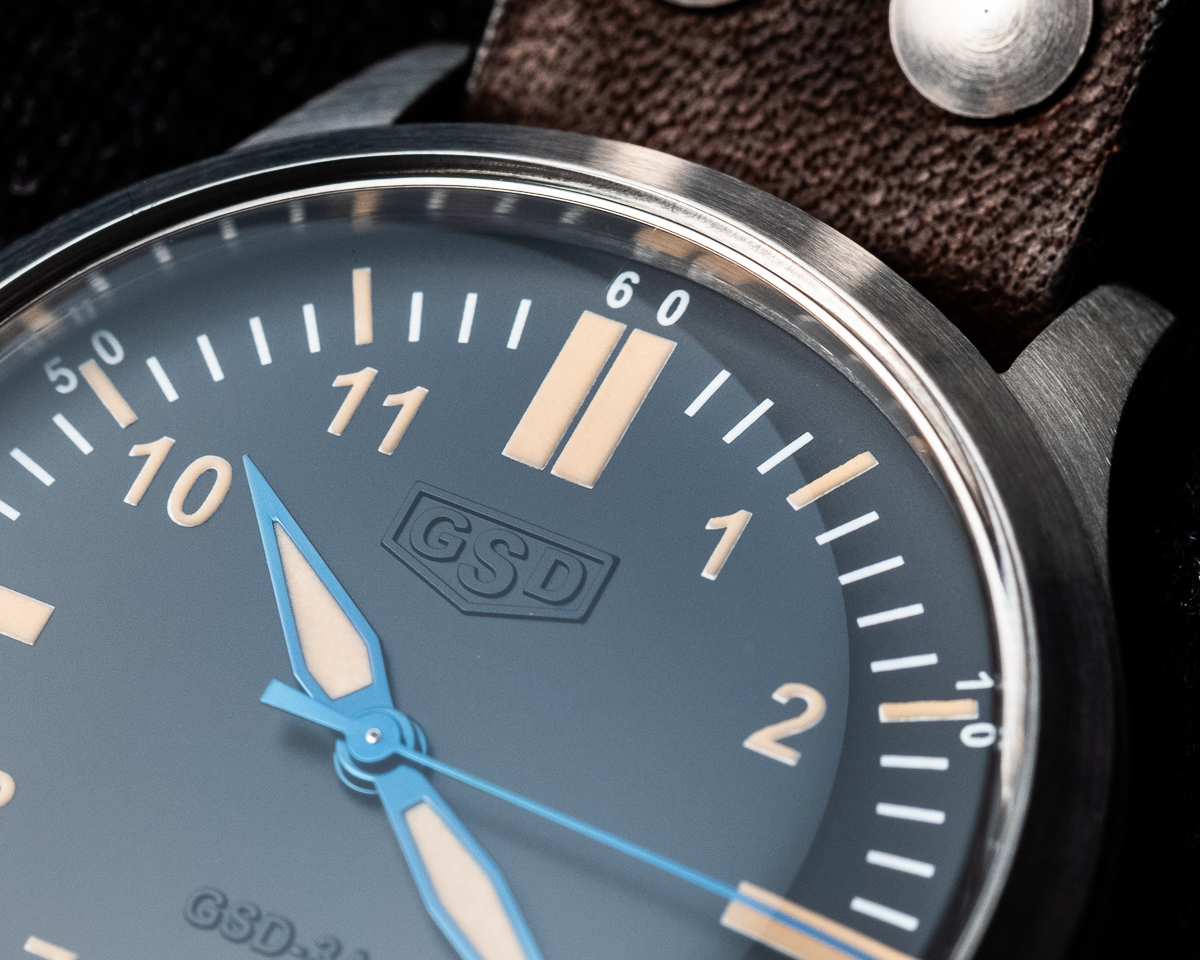
The lume on the dial is well executed, with large raised (almost applied) plots at each quarter-hour and smaller plots on the others. Each of the Arabic numerals is also lumed. All of this gives the watch a very striking glow when you step in from the bright sunlight, not to mention extreme functionality at night or in dark places like a movie theatre.
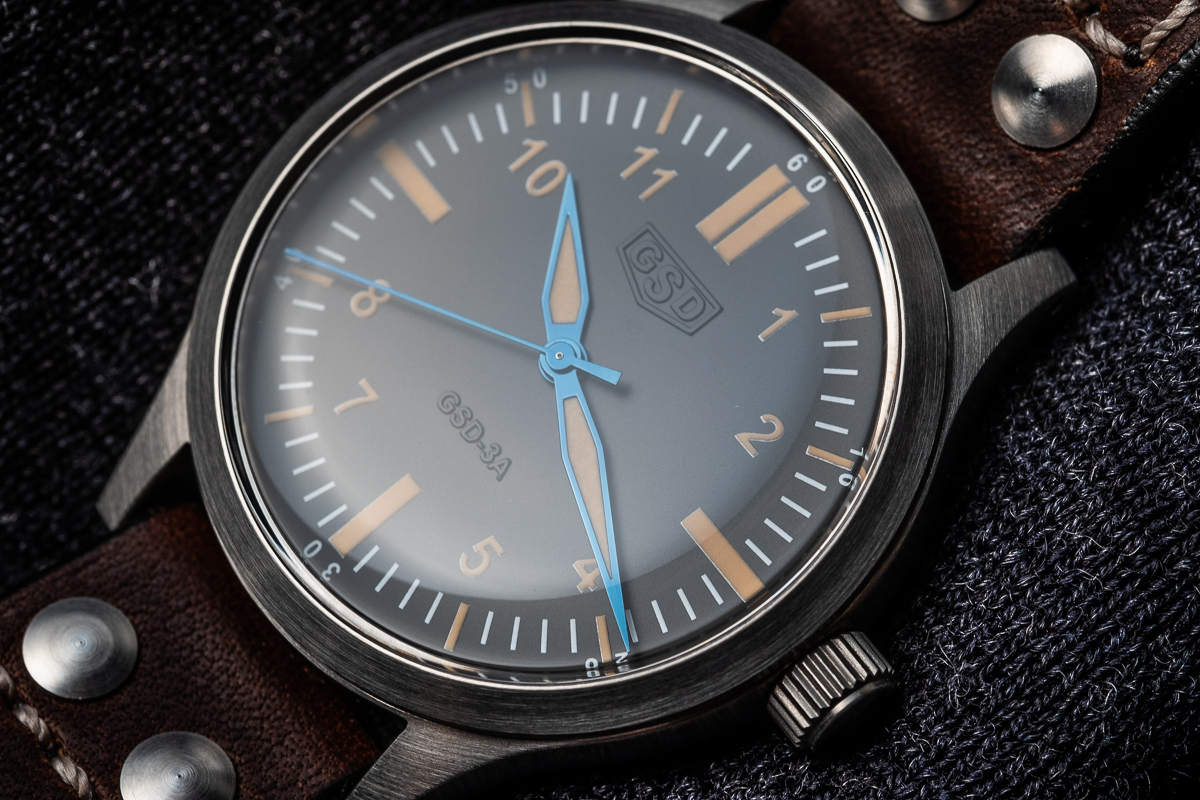
The hands are reminiscent of IWC’s pilot-style hands with that tapered-sword look. The big difference here is that the IWC hands have matte black outlines that disappear into the dial, while Stevens’ are steel and can either be blued or left plain. (I’ve even seen some that resemble gold.) That said, I opted for blued hands and have found that the outlines still disappear into the dial most of the time unless the watch is in the direct sun, in which case you get the pop of color. The lume on the hands is as effective as the dial, shining brightly all night.
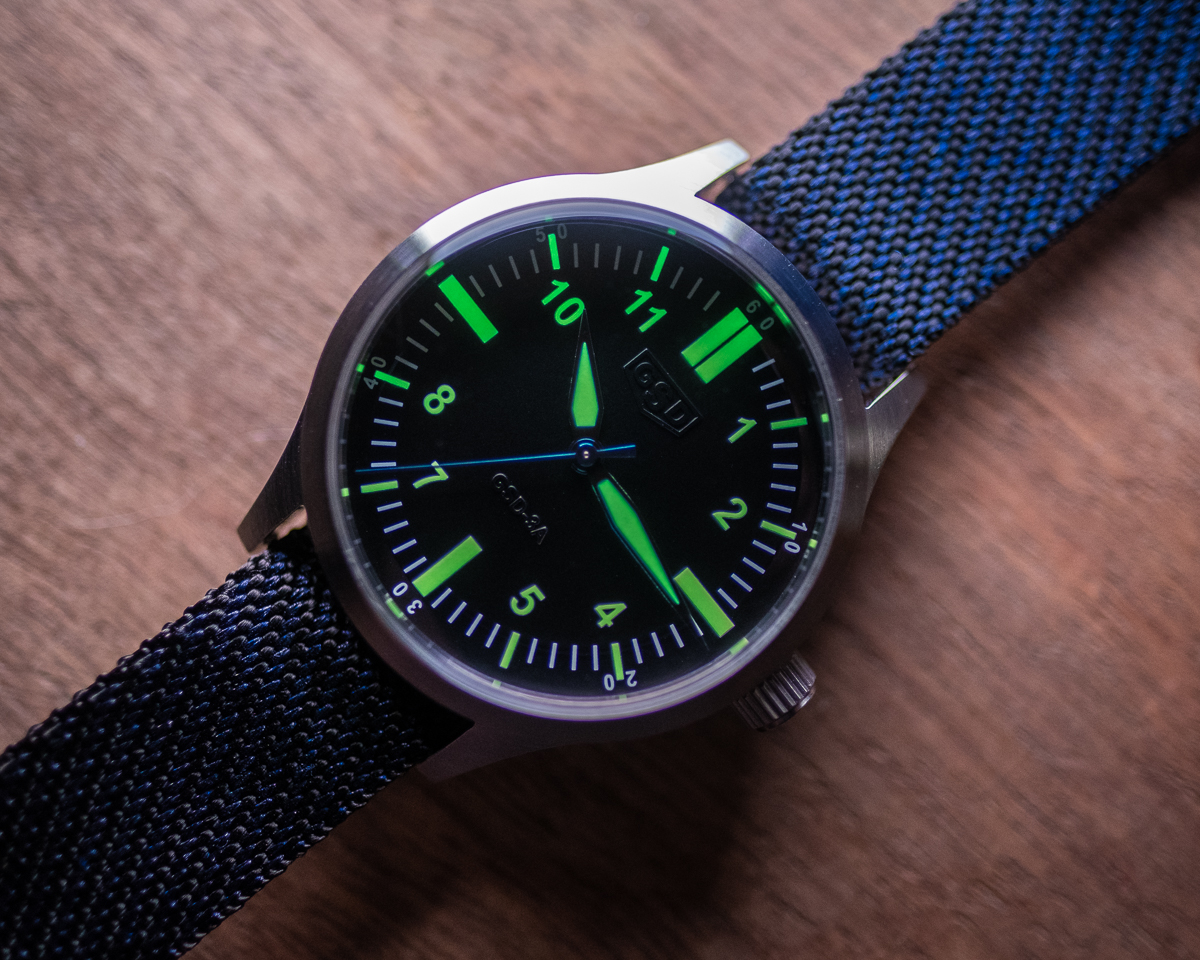
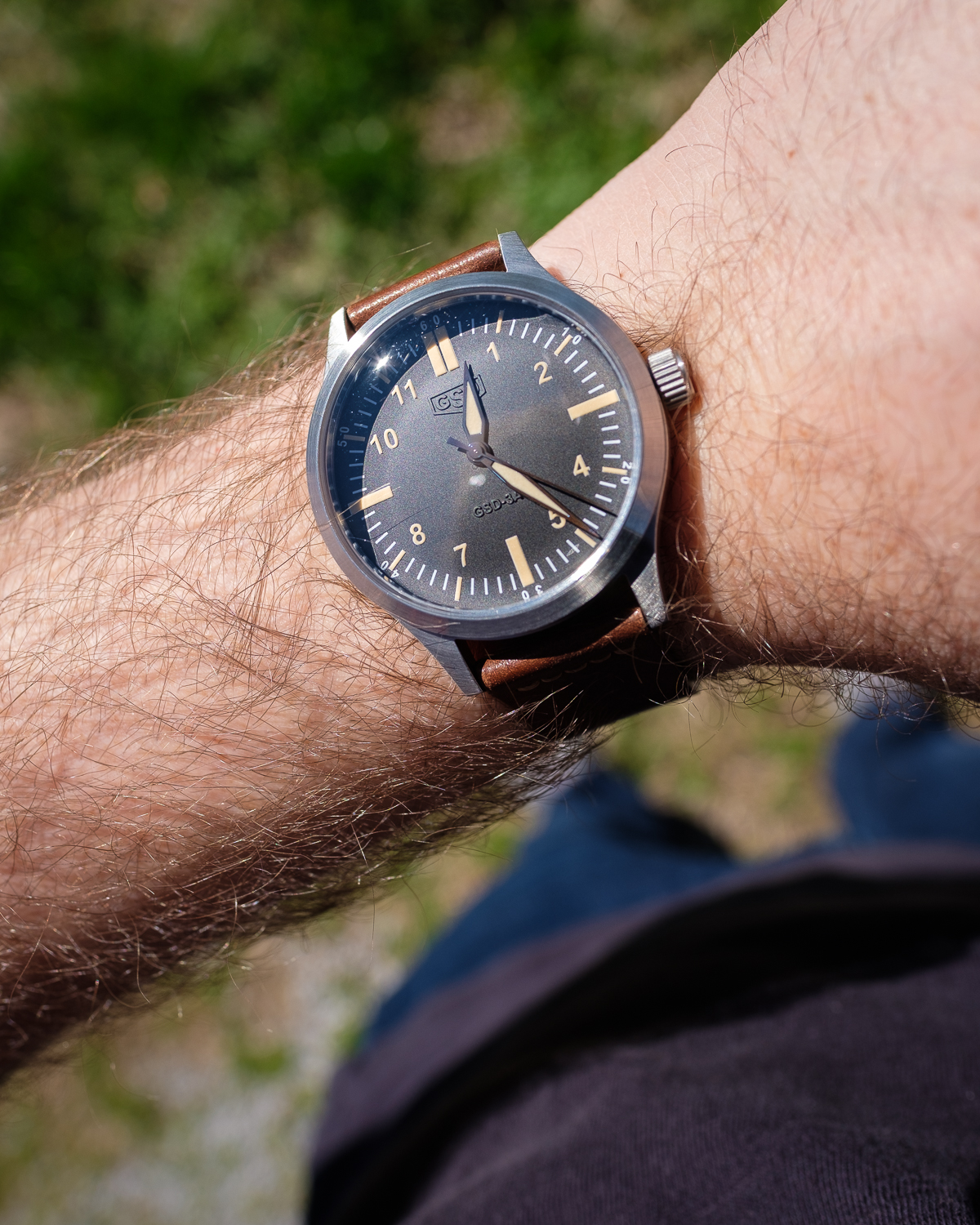
The Movement
For the GSD-3A, Stevens employed the Miyota 9015. For those not familiar, this is a Japanese movement that boasts 24 jewels, beats away at 28,800 bph, and has a 42-hr power reserve. I’ve had 9015 movements in several other watches, including other GSDs, and my experience has always been excellent. One could argue that it would be cool to see the GSD lineup incorporate some Swiss movements — but honestly, I’m not sure what value that would bring, apart from perception. As priced, these watches offer grimmense value in a handsome package.
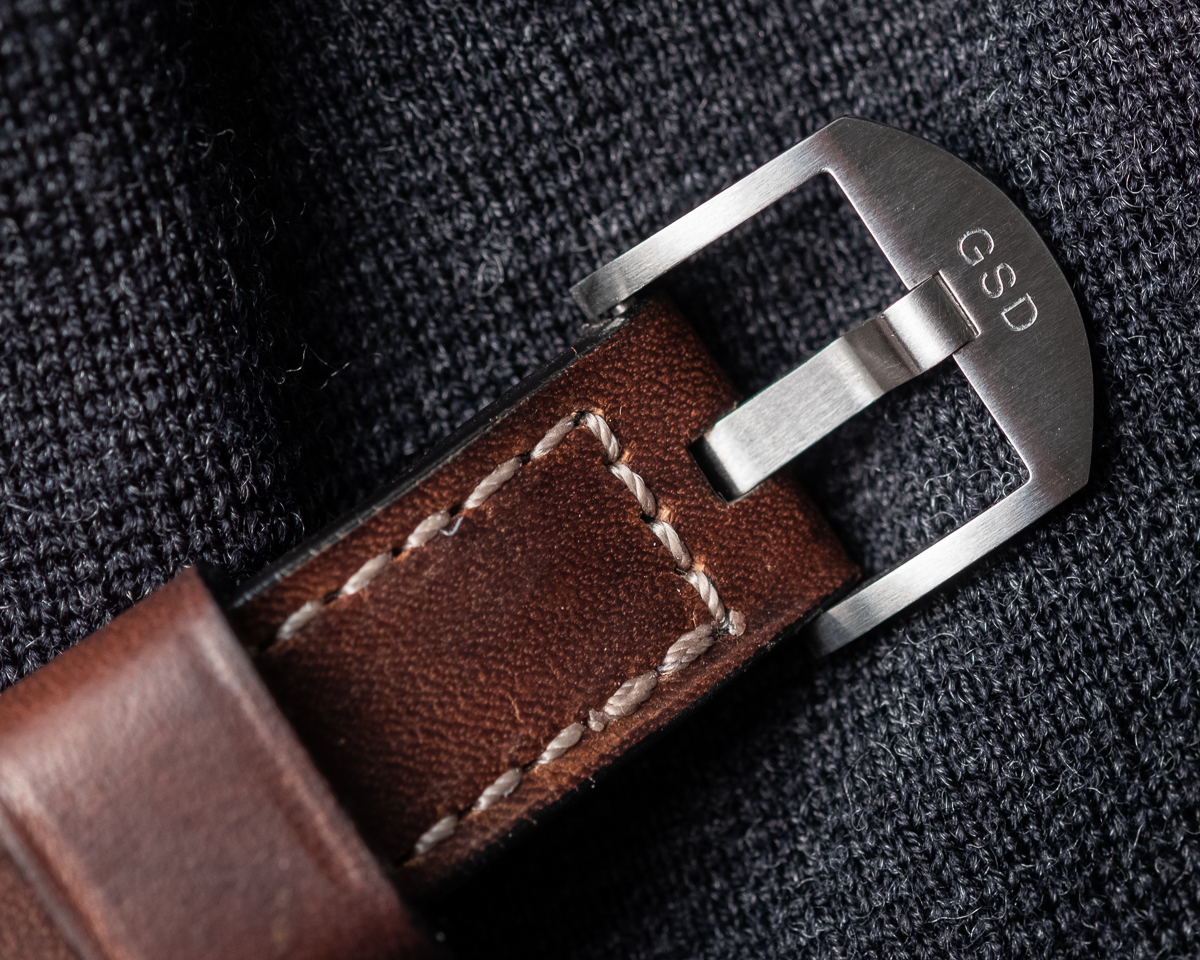
The Strap
Stevens is a bespoke strap-maker, so it comes as no surprise that this is one area in which the GSD watch line excels. His straps start at $150 and are made out of a variety of new and vintage materials, including vintage leather ammo pouches and other military sources. So, when you factor the strap into the purchase of the watch, you can begin to see the value of the whole package, at least in my opinion.
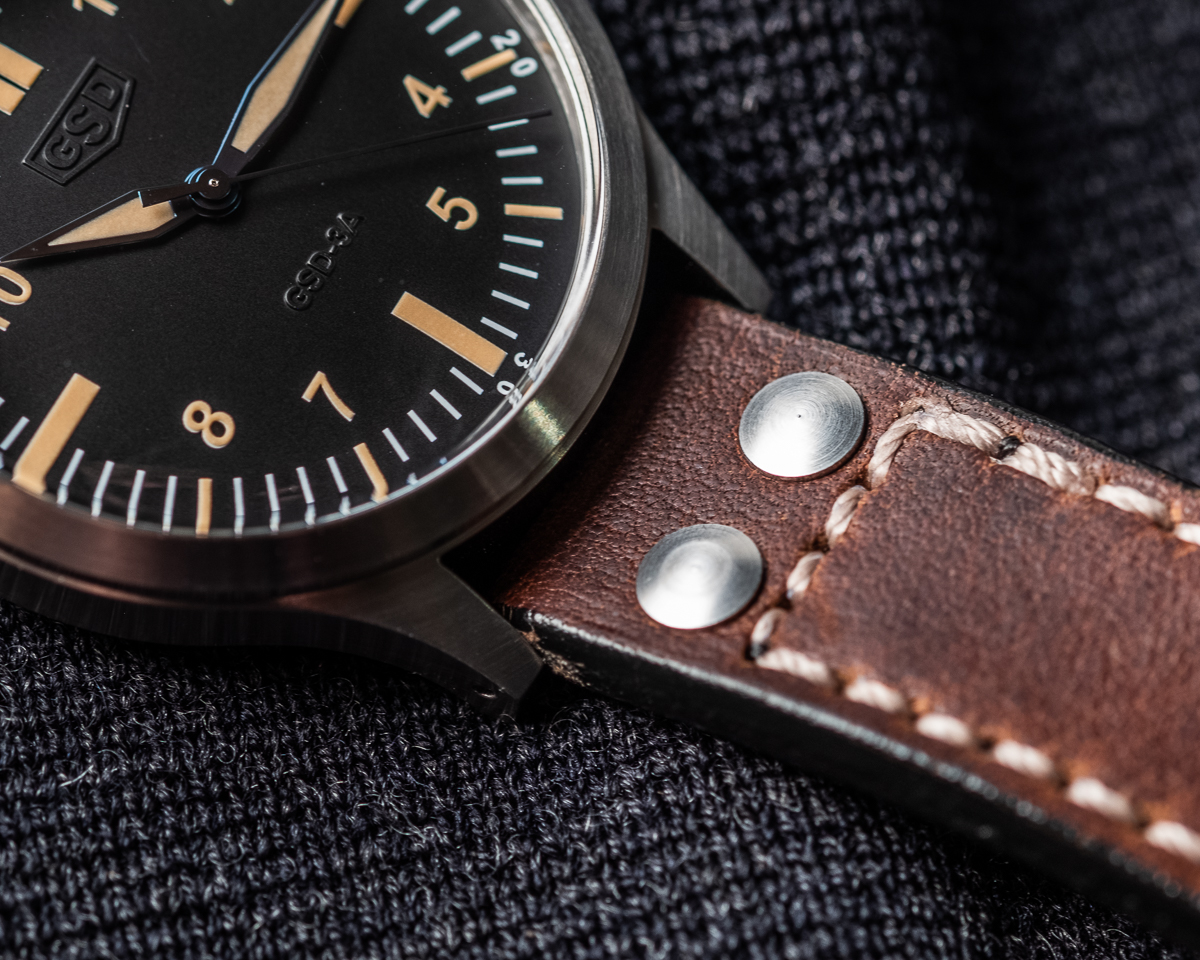
All of that aside, Stevens’ straps are excellently made, as you’d expect from a custom strap-maker. My particular strap is a made from Horween’s Dublin leather in a beautiful coffee color. I have several GSD straps, and they all run thick, but they are also all exceptionally comfortable and break in nicely.
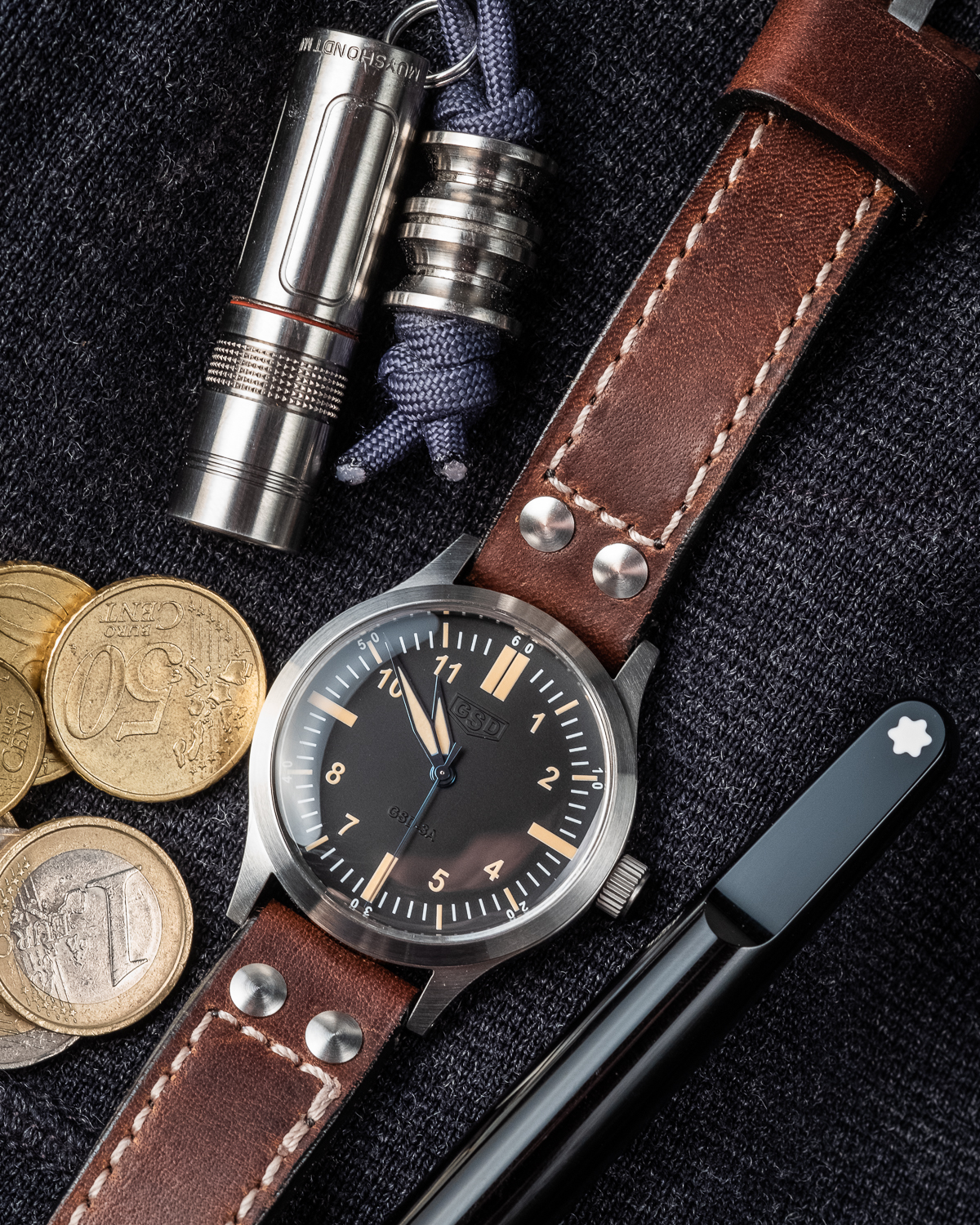
As I stated earlier, “value” inevitably becomes the first and most significant factor in determining worth with an independent watch brand, and I believe the Greg Stevens Design GSD-3A balances quality with cost in some unique and clever ways. However, moving past the value equation, alone, I think Stevens has produced a real winner here, taking the somewhat common trope of a pilot watch and adding some subtle design elements that set it apart from its competitors.
To give the competitive options a fair shake, one obvious watch to look at is the Stowa Flieger Classic 40 (check out Stowa’s site here), sized at 40mm and featuring an ETA movement. You’ll gain the Swiss movement and more traditional dial stylings for the cost of 831,93 Euros.
Another premium option would be the venerable IWC Automatic Spitfire (discussed here by Zach). Debuted at SIHH 2019, this watch will feature IWC’s new in-house movement and top-notch finishing across the board — at a significantly increased price-point of $4,350 in steel.
Alternatively, indie brand Zelos recently released its Skyraider watch (covered here) which features an ETA 6498 (Unitas) movement. Sized at 42.5mm and priced at $899, the Zelos offers a real direct step up, if you will, from the GSD — but again, the addition of a Swiss movement is, in my mind, for perception alone. So, it comes down to a personal judgment call as to whether the extra money is worth it.
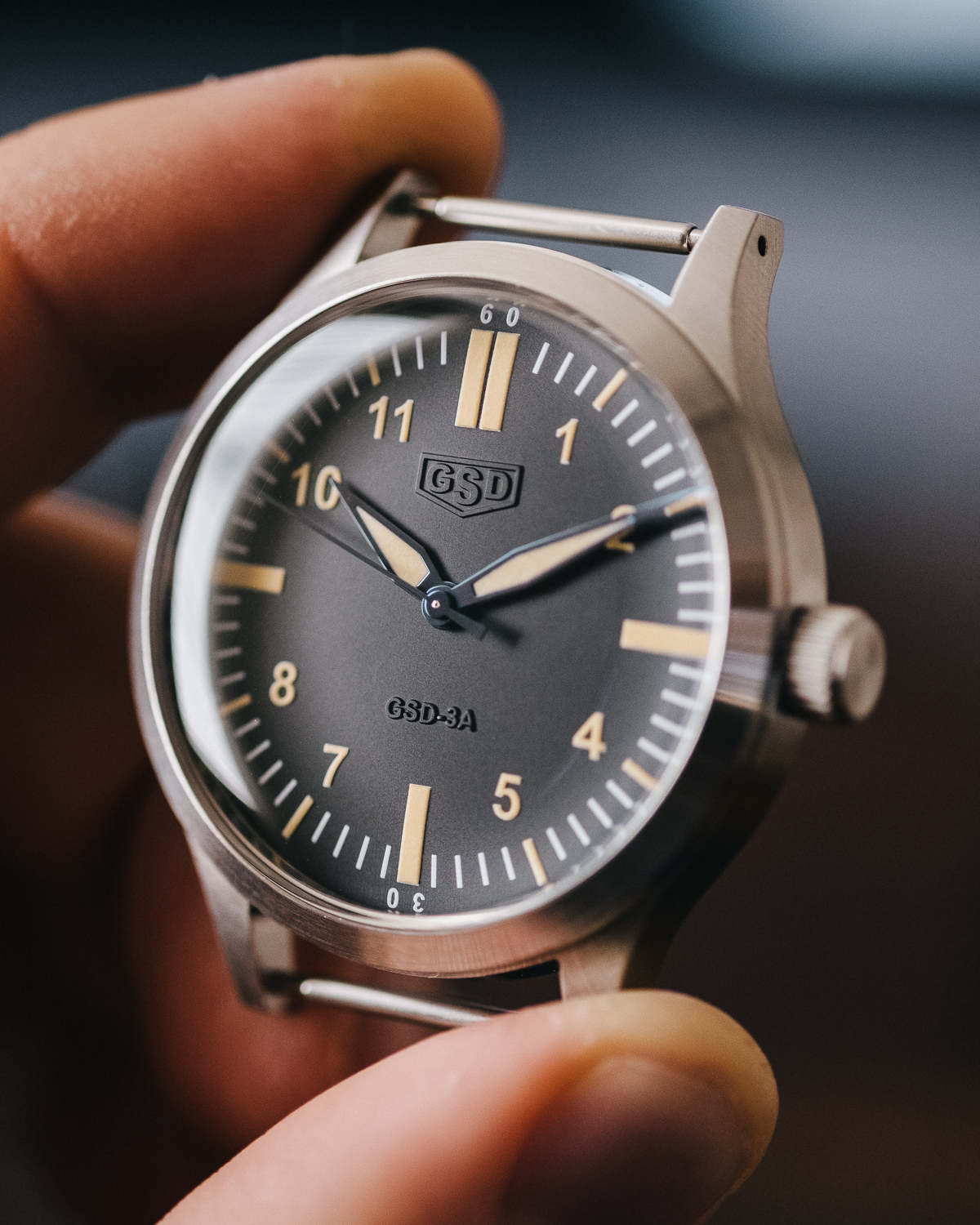
As it stands, the GSD-3A is available in a variety of different case finishes and can be paired with many different straps from the GSD stable. The watch also ships with a high-quality nylon NATO and in a nice metal tin. It is priced at $645 and is available directly from Stevens at gregstevensdesign.com.
Necessary Data
>Brand: Greg Stevens Design
>Model: GSD-3A
>Price: $645
>Size: 41mm
>Would reviewer personally wear it: Yes, and I frequently do.
>Friend we’d recommend it to first
: This would make an excellent first mechanical watch with a proven movement and custom strap.
>Best characteristic of watch: The dial embossing.
>Worst characteristic of watch: The acrylic crystal looks great, but will show some wear and need to be cared for over time.

